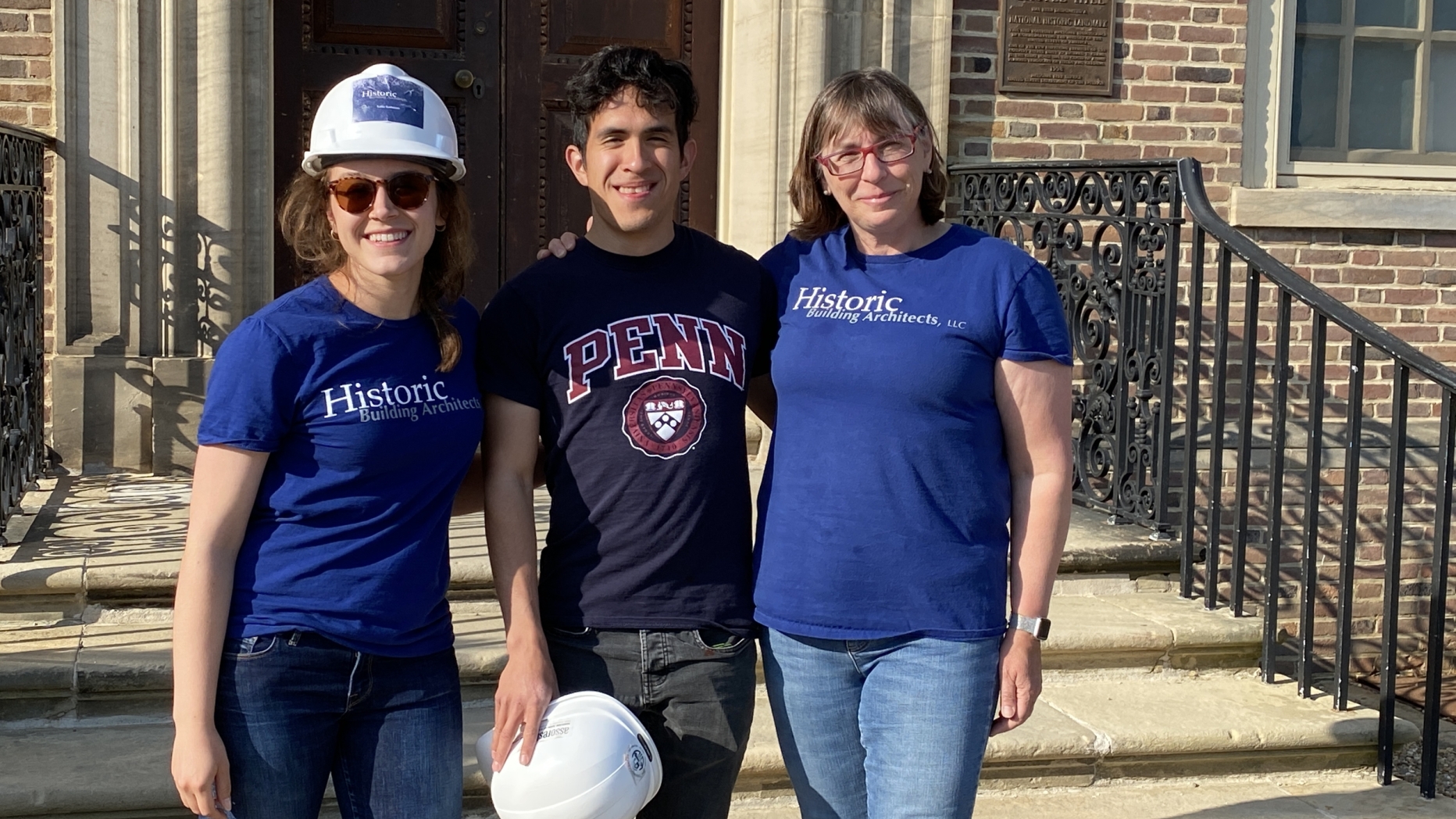José Hernández | Historic Building Architects

"Travel to project sites was key: I learned to synthesize and translate information from the drawing board to the reality of brick-and-mortar."
Stuart Weitzman School of Design
102 Meyerson Hall
210 South 34th Street
Philadelphia, PA 19104

"Travel to project sites was key: I learned to synthesize and translate information from the drawing board to the reality of brick-and-mortar."
This summer I interned at Historic Building Architects (HBA) as a Preservation Designer. HBA is an award-winning historic preservation firm based in Trenton, New Jersey that specializes in conservation and adaptive reuse of historic buildings and places.
The team includes full-time preservation designers, a managing architect, and a materials conservator. The culture of the firm is centered on integrity, resiliency, and continuing learning. The firm cultivates a psychological safety net that enables everyone to ask questions, voice suggestions, and admit mistakes. The culture revolves around stretching and learning instead of proving and perfecting. The horizontal organizational structure meant that my work was supervised by a different professional per project. This style of organization enables everyone to practice leadership, communication, and adaptability skills.
I was amazed by the amount of energy the principal brings to the office every day. In addition to being the driving force of the firm, the principal models the values that she expects from others. The principal deeply cares for everyone’s well-being. In return, team members care about the firm's mission. Work-life balance is not only respected, but encouraged.
I applied my technical skills in AutoCAD/InDesign/Photoshop from John Hinchman’s Digital Media class to write an exterior conditions assessment report for Castle Hill, an estate in Ipswich, Massachusetts. I applied research skills learned from Kecia Fong & Aaron Wunsch Documentation course to conduct archival research at Penn’s own Architectural Archives and digital collections of the Art Institute of Chicago –these informed the preservation approach of light fixtures at Princeton University Chapel and conservation strategies for Castle Hill. I applied laboratory skills learned in Frank Matero’s Conservation Science course to do a mortar analysis for Olson House – a Colonial farmhouse in Cushing, Maine. In addition, I applied the theory of classical moldings to design a pulpit soundboard for Princeton University Chapel and 3D modeling skills to visualize the structural framing of Olson House.
Travel to project sites was key: I learned to synthesize and translate information from the drawing board to the reality of brick-and-mortar. In Castle Hill, I learned the meta-cognition skill of being suspicious of my own biases in diagnosing pathologies. In Olson House, I learned how to prioritize the integrity of scientific measurement given a time constraint. In Princeton University Chapel, I learned the value of note-taking during meetings to help calibrate the remembering self with the experiencing self. In Carver Center, I learned the imperative of getting your work subject to multiple feedback loops. Overall, perhaps the biggest lesson was the primacy of clear and candid communication with all members of the organization.